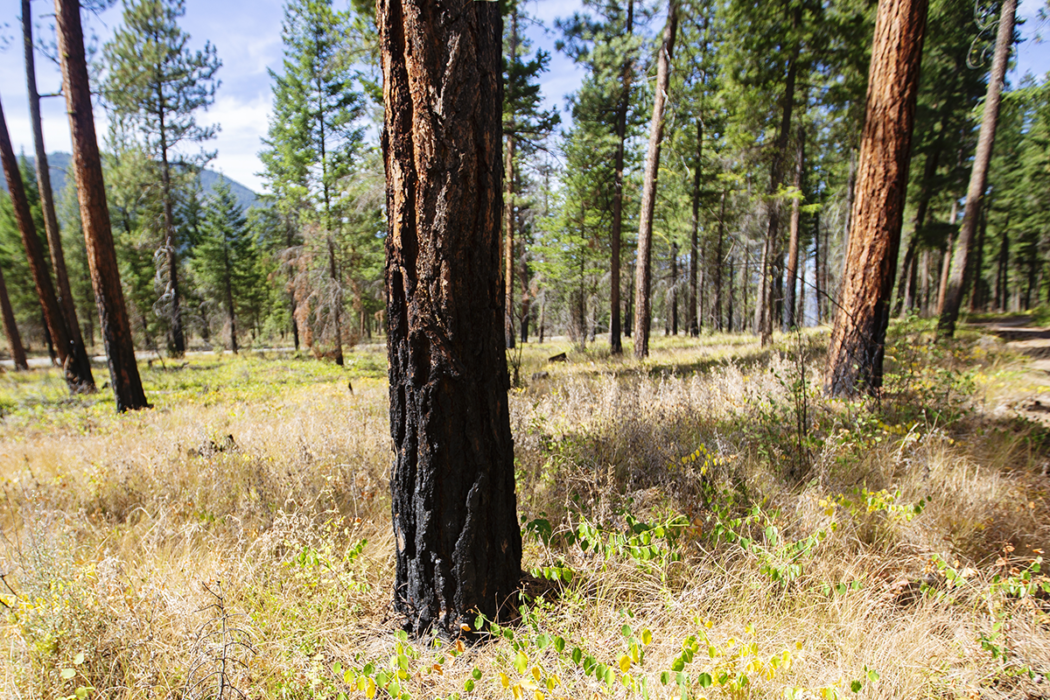
From Siberia to the Amazon rainforest, the world caught on fire this year. In Alaska, 2.5 million acres have burned during a historically hot summer. The role of deforestation and climate change in starting these fires makes it impossible to ignore the fact that human forces are exacerbating fire — and that will take our own action to turn things around.
Washington’s Methow Valley is no stranger to towering flames and skies thick with smoke. After seeing a half-million acres burned nearby over a two-year stretch, residents have come to expect intense blazes in this slice of north-central Washington. The Methow was spared this summer, but fears have only temporarily been allayed. The sound of sirens through the streets of Winthrop — a bustling small town with a main street straight out of an old John Ford feature — stirs local chatter: Does a fire await?
This community, like so many in the West, is intertwined with wildfire. Some have come to depend on the fire season as a way of life; others see it as a hindrance to business, or, worse, a searing reminder of destruction and loss. It’s in places like the Methow during summers like this that one realizes how wildfires, all too often caused and historically exacerbated by us, are fundamentally reshaping our relationship with Western landscapes.

Outside the town of Carlton, charred trees are peppered among those left unscathed in a mosaic pattern on the hillsides. Stark branches, quiet and still, are ghostly reminders of violent forces that have torn through the valley, scarring the landscape and community. The Carlton Complex Fire of 2014 began as four separate lightning-strike fires, but they converged into one conflagration that burned more than 250,000 acres and destroyed hundreds of homes. The next year, another cluster of fires, the Okanogan Complex, burned some 300,000 acres and forced the evacuation of Methow Valley towns.
An abnormally warm spring and diminished snowpack this year compelled residents to brace for the worst. But summer defied expectations. A series of cool, wet days staved off the valley’s presumed cradle of combustion.
Fire seasons are hard to predict. The main uncertainty is the igniter ⎯ usually lightning or a human mistake, like a dropped cigarette. Combine that spark with parched, dense forest, and mix in winds that spread flames at terrifying speeds, and you’ve got the ingredients for a megafire like the Carlton Complex, which remains the largest single fire in state history. Relief and gratitude for the milder season prevail among residents this year, yet an uneasiness at its impermanence hangs in the air like the smoke they’ve come to expect.
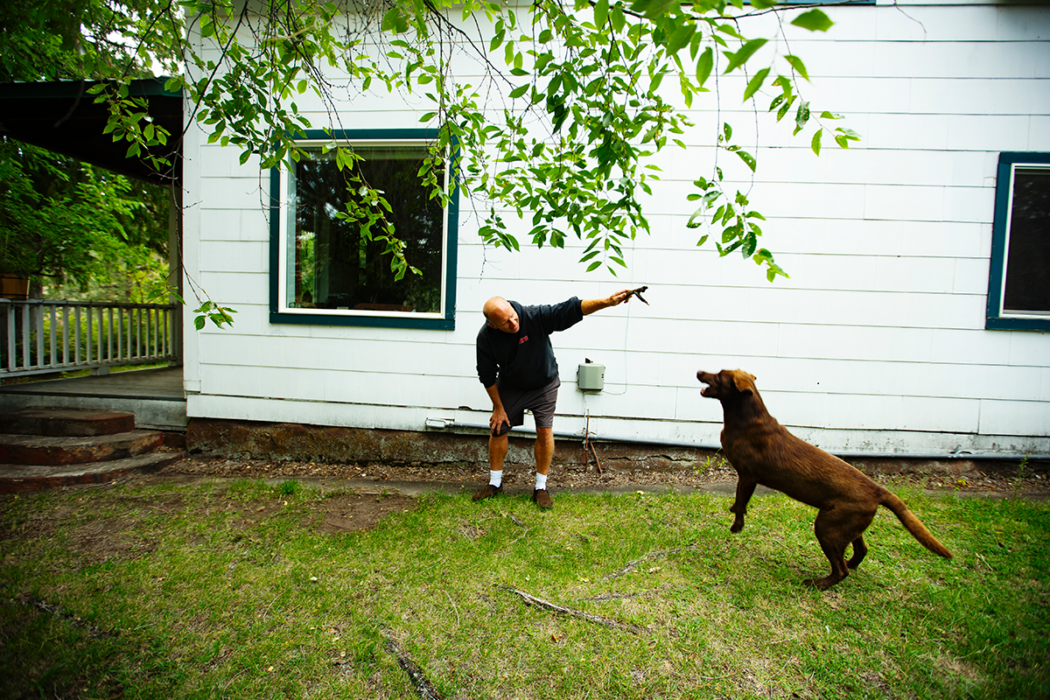
Most people run from fire and smoke, but Bill Duguay built his life around this force of nature. In 1998, Duguay, then a schoolteacher with a growing family, started to supplement his income by working as a firefighter over the summers. In 2004, Duguay and his wife, Jennifer, bought their first used fire engine and launched Methow River Wildfire.
“It’s a challenge being local in an area where everybody’s afraid of fire, particularly after Carlton Complex. Our family relies on wildfire for business; it’s kind of an awkward thing,” Duguay said. “But everybody handles it pretty well. We know there’s always going to be fire somewhere at some point, but we also hope it’s not in our backyard.”
During slower seasons such as this summer, the company holds off on any big equipment or facility purchases. The Duguays get by on their investments and Jennifer’s income as a fifth-grade teacher.
Fire and firefighters come and go in this mercurial industry, but Methow River Wildfire is a tight-knit organization. Bill’s daughter Johnnie, son Willy, and godson Ian Lince all have worked or currently work for him.
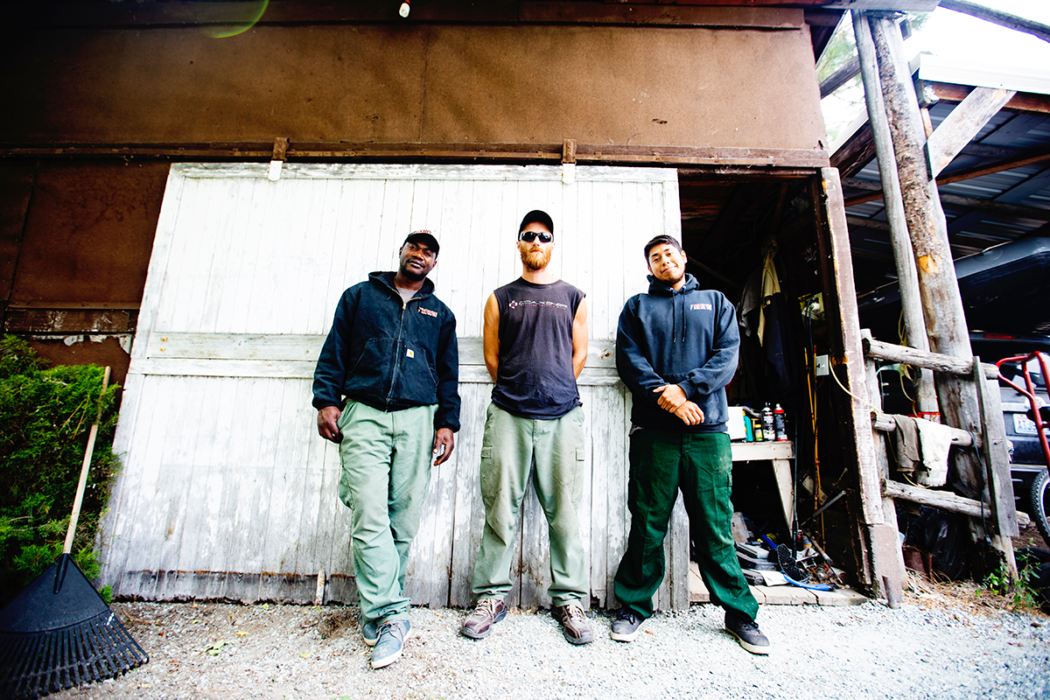
Methow River Wildfire engine boss Clayton Bell and firefighters Billy Cleverly and Ozzie Hernandez all hold down other jobs. Bell takes shifts at a fruit-packing shed, while Cleverly and Hernandez work as a day laborer and ski chairlift operator, respectively. During this mild fire season, they picked up firefighting opportunities outside of the valley. On this day, they had just returned from fighting the Williams Flats Fire in neighboring Ferry County.
Okanogan, Ferry, and Stevens counties neighbor each other along Washington’s border with Canada. The three have the highest unemployment rates in the state, and their economies have seasonal swings familiar elsewhere in the rural West. In Okanogan, which hosts the Methow’s bustling tourism industry, unemployment rates range from 10 percent in the winter to half that during tourism and harvest season.
A weak fire season is beneficial to the hospitality industry in the Methow Valley, but a decrease in fires inevitably leads to a decrease in local firefighting jobs. “It is a challenge when you have employees that rely on it for their incomes,” said Bill Duguay. His crew members earn between $16 and $40 per hour — far more than most tourism jobs pay — and busy fire seasons mean plentiful overtime. But in a season like this, no work means no pay. Employees miss out on summer earnings that help them stay afloat through winter, when jobs are harder to come by.
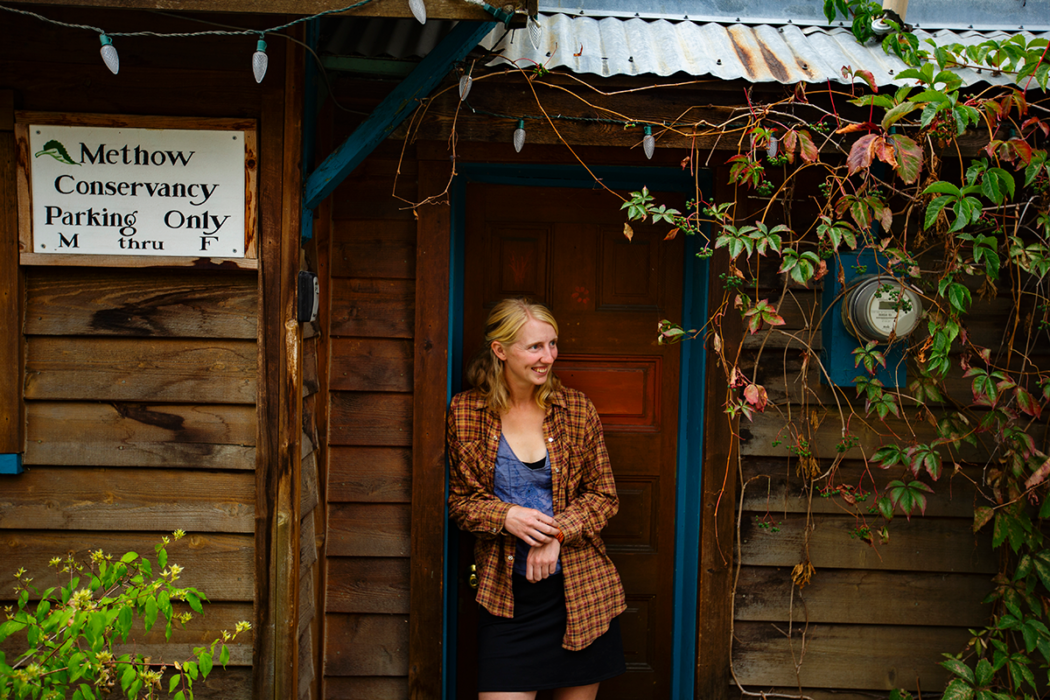
“I have deep roots in the community,” said Johnnie Duguay, whose grandparents came to the Methow Valley almost 50 years ago. “Even when I was living in a bigger city where there were more people, I didn’t have as many human interactions as I do on a day-to-day basis here.”
When Duguay started working for her parents at 18, she joined an exclusive club: according to the National Fire Protection Association, just 7 percent of firefighters are women.
“If you don’t see a ton of other people out there who look like you, who are doing firefighting and succeeding, it can be kind of challenging,” she said. Duguay remembers experiences as an engine boss, when other firefighters assumed the role belonged to her younger brother, Willy. When stationed for days at fire camps, she felt like a zoo animal, conspicuous and gawked at by male colleagues. The gender disparity made her work harder. “You’ve got to be better than your best to be there,” she said. “There’s a visibility as a woman.”
After four years firefighting, Duguay today puts her experience to work as a stewardship associate for the Methow Conservancy. One aspect of her job is to help landowners make their properties more resilient to the fires she used to tamp down.
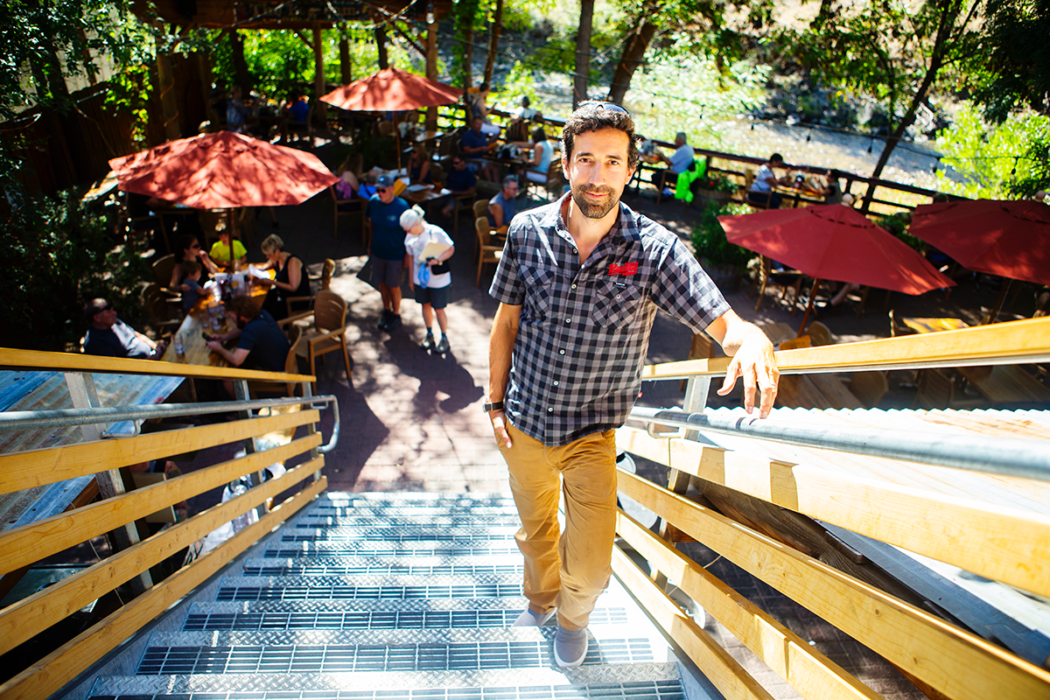
When Jacob Young, his brother Nate, and friend Troy Anderson acquired Old Schoolhouse Brewery in 2016, the Carlton Complex and Okanogan Complex fires had already come and gone. But the smoke and fires since have taken their toll.
A big draw of Young’s brewpub is its ample outdoor seating in the summer months, but last summer the smoke forced customers to the smaller inside space — which only has nine tables — for 15 days. The decreased capacity meant Young had to cut staff, which typically reaches around 50 in the tourist season.
“When it’s really hot and smoky, it’s a feeling of helplessness, truly,” Young said.
It’s not uncommon for locals to leave town during fire season, but not everyone has that option. Young, his wife Avery, and their 3-year-old son coped last summer by running air purifiers in each room of their Winthrop home. Room One, a local health and social services organization, distributed 50 such purifiers to homes in need in 2018.
But air quality is only one challenging aspect of fire season — losing power is another. “Every time the power goes out, we risk having to dump out beer and closing,” Young said. “It happens mid-service sometimes ⎯ every seat full. We can have several hundred dollars in walkouts, and we just have to write it off and look forward.”
The reality of fires in the valley has changed the direction of the business. “One of the ways to minimize the risks of the fires was to put our focus on the beer,” he said. A new production facility and taproom in Twisp decrease dependency on the brewpub (sales were up 11 percent during this year’s low-smoke summer). By emphasizing distribution, the brewery’s success is less affected by the severity of fire season.
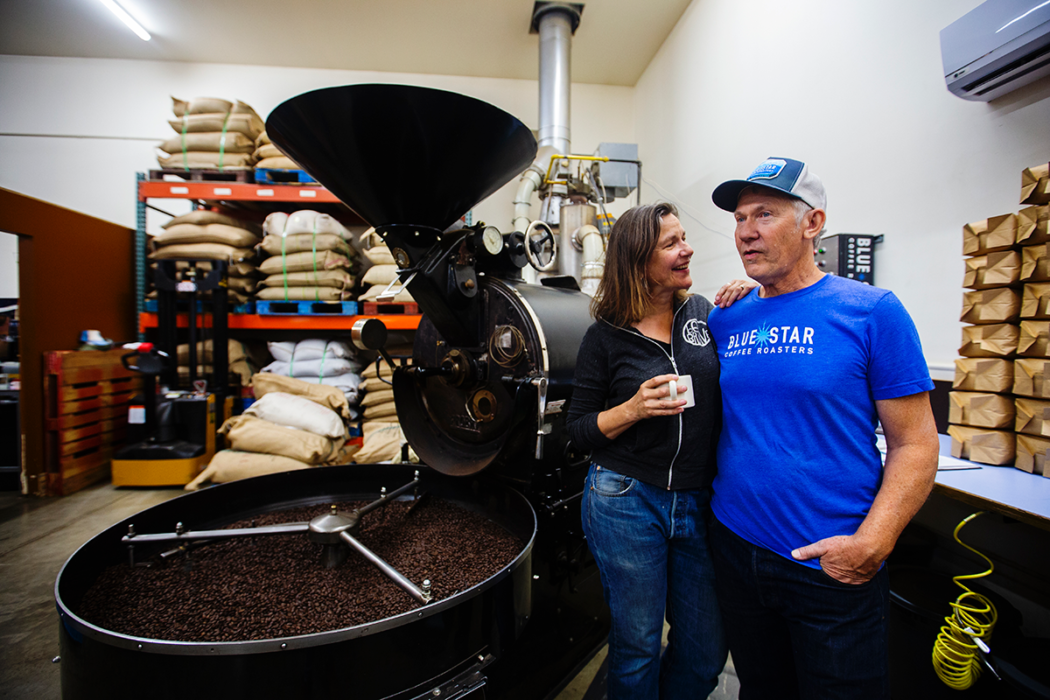
“August has become our least favorite month,” said Meg Donohue, who, with her husband Dan, opened Blue Star Coffee Roasters in Twisp in 2007. “This year’s been a fluke.”
The Donohues have been residents of the Methow Valley since 2004. Transplants from Seattle, they were drawn to the valley’s natural beauty, civic discourse, and thriving food culture. Blue Star, compared with many other businesses in the valley, is not heavily dependent on seasons and tourism. During the Carlton Complex Fire in 2014, it was one of the few businesses that remained open throughout the rampant power outages.
“People really pulled together. Everyone was working 24-7, and we stayed open,” said Meg. “We were able to become a hub for the community and we were proud to be able to do it.”

The Donohues weren’t left unscathed by the Carlton Complex, though. The couple used to live off Texas Creek Road, southeast of Twisp. Driving the road today is like traveling the landscape of another planet. The Carlton Complex Fire ravaged the area, and burned several buildings on the Donohues’ property.
The Donohues at first believed their home was spared. The fire passed by their house twice as it ripped through the Texas Creek drainage. But fire is an unpredictable force, and when it turned back a third time, their neighborhood was right in the path of destruction.
“The creek bed was just moon dust — it was dramatic. It changed the landscape forever,” said Meg Donohue. Several homes in the area have been rebuilt in the five years since the fire, but the Donohues couldn’t afford a complete rebuild. They moved closer to Twisp and sold their Texas Creek property this spring. Emotion caught Meg by surprise as she recalled those events. It’s not just the loss that struck her; rather, it’s the resilience — of aspen trees sprouting from the ashes on her former property, and of her community after such devastation.

In the 15 years since fire ecologist Susan Prichard moved with her family from Seattle to the Methow Valley to be closer to the mountains, there’s been an uptick across the West in what are called replacement-severity fires — those that kill at least 75 percent of top-canopy trees in a burn.
“I’m keenly interested in dry forest restoration, and our community and ecosystems becoming more resistant to climate change and warmer, drier summers,” Prichard said.
Prichard, a research scientist with the University of Washington, showed me one area outside Mazama that, following prescribed burning by the U.S. Forest Service, should hold up better during future blazes.
“Our research here and elsewhere has been extremely promising,” Prichard said. “The combo of thinning and/or burning makes a huge difference in how resilient forests and landscapes are to fire, and it’s worth the investment.”
Some elements of the forest thrive under the right fire conditions. Ponderosa pine, for instance, depend on wildland fires to clear shrubs and shade-tolerant trees that can crowd them out. People can benefit from fire, too. Prescribed burns help create a buffer between impending fires and the more populated areas of the community.
A hesitancy to use controlled burns has been a major contributor to megafires like the Carlton and Okanogan complexes.
“We’re talking about nearly a century of fire exclusion prior to these big wildfires occurring,” Prichard said. “In the Methow Valley, we know for certain that the native people actively burned these landscapes. Smallpox and a combination of displacement by Euro-American settlements stopped their burning practices.” Furthermore, livestock consume grasses that previously sustained the light fires that naturally thinned shrubs and saplings in both forests and grasslands.
To Prichard, fending off climate change’s destructive consequences is going to require adaptation. “I feel really strongly that these early wildfires are a wakeup call,” she said. “This is just the prologue. It’s pretty dire and sobering, and it keeps me up at night, literally.”
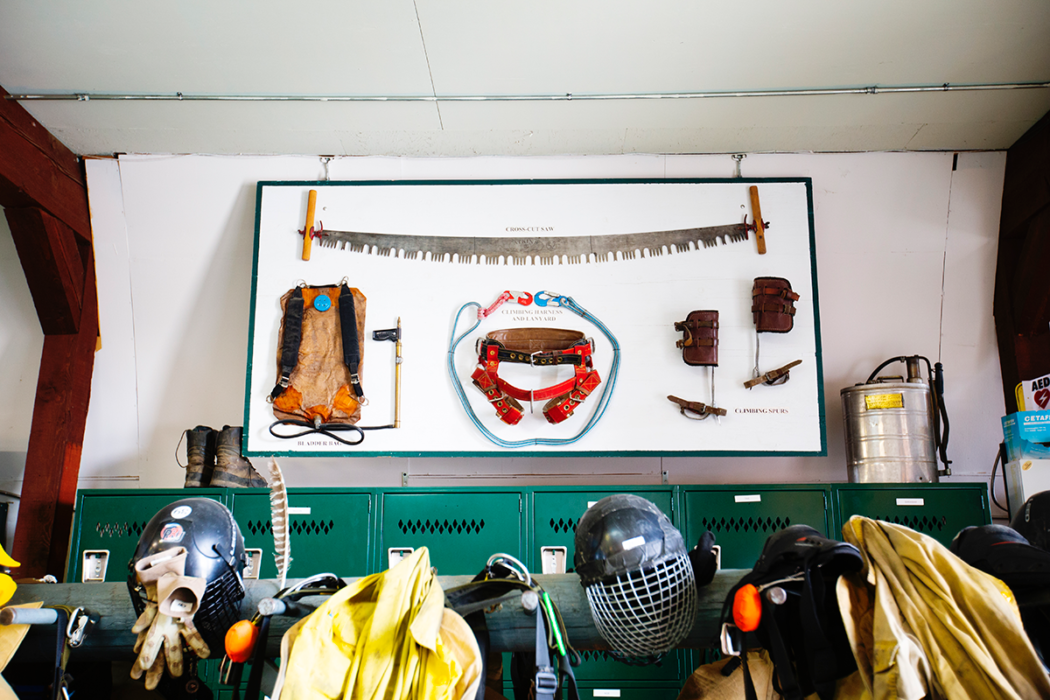
Over the past few years, Methow Valley residents have suffered fire-induced loss: of homes, of power, of clean air, and of life — five people died in connection to the Carlton and Okanogan complex fires. Complicating the physical challenges are the mental ones. To live in a cloud of smoke is isolating, suffocating, terrifying. But the valley is not resting on its laurels during this season of relative calm. After all, this is the birthplace of smokejumping — the practice of parachuting out of a plane into remote, hard-to-access areas to snuff out fires early. Smokejumping started in 1939 in Winthrop and has since become an integral firefighting practice. The North Cascades Smokejumper Base, pictured above, serves as a hub for Forest Service jumpers around the Northwest.
Wildfires of the recent past have propelled the community to action. Residents held the Methow Valley Climate March earlier this spring, and campaigns like Methow Ready, which started in 2014, provide training and resources to prepare for future disasters. Some locals have opted into the Firewise USA program, which contracts with local companies to thin trees on private property and create shaded fuel breaks — alterations that can slow down a fire.
After August, the days get shorter, rains start to arrive, and the imminent threat of a megafire becomes smaller. But that doesn’t mean the Methow Valley is clear of risk ⎯ fire season can linger until the snows arrive. Whether this year, the next, or the one after, this area will see more fire. When it comes, residents will be as ready as they can be.
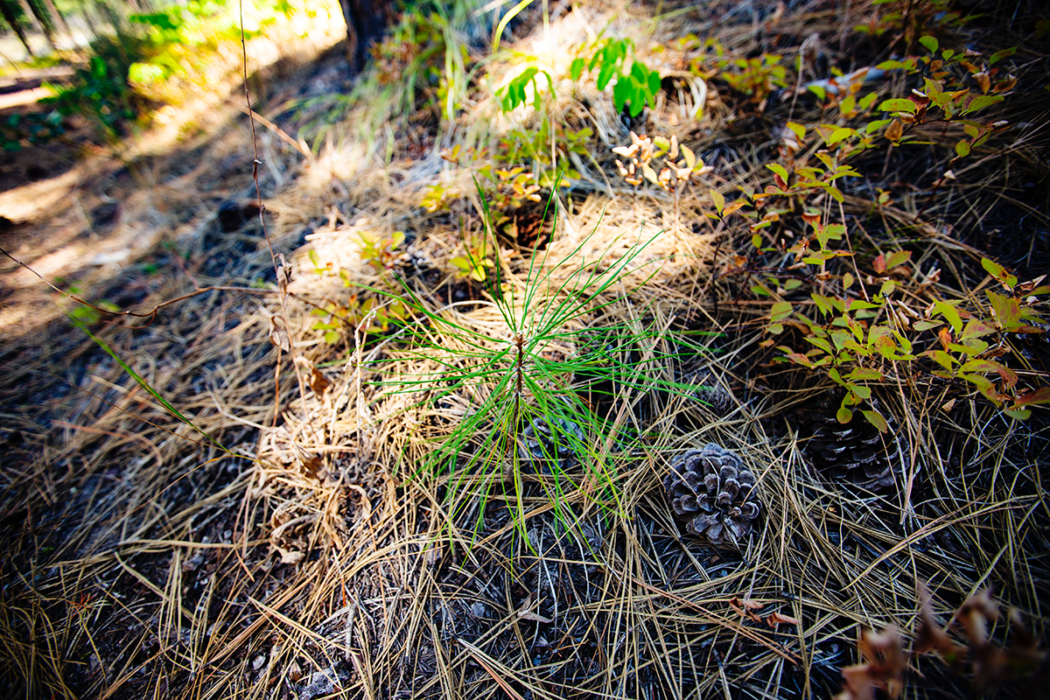
This post has been updated to correct an editing error.

